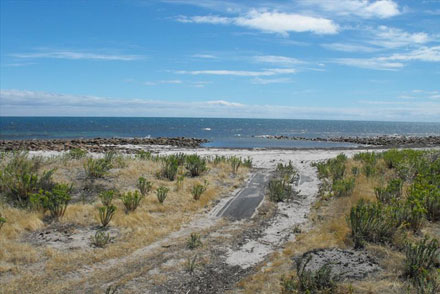
Tension is building between Australia’s first publicly listed timber company and the country’s largest abalone producer, over a proposed multi-user wharf on Kangaroo island. Source: ABC Rural
The Kangaroo Island Plantation Timber company first unveiled its plans for the $25 million export facility last year, after it bought of 19,000 hectares of agricultural land in a deal which effectively tripled its timber resources.
KIPT managing director John Sergeant said the $55 million timber deal with New Forests Asset Management would change the face of the South Australian forestry industry.
“Those plantations can produce every year about a quarter as much timber as is currently exported through Portland, the largest timber terminal in the world,” he said.
“Looking at all the timber export operations around the pacific rim, Kangaroo Island would be in the top quarter of those in terms of volume, so it’s quite a significant development.
“But up until now there’s been no economic way to get them off the island.
“[So] what we’ve lodged with the State Government is an application to build a wharf on the sheltered north coast of the island that will enable the timber to be exported.”
However, the project has received fierce opposition from Yumbah Aquaculture.’
The aquaculture company reacted to news of KIPT’s application with the South Australian Government for Major Development Status, with the launch of social media campaign ‘Save Smith Bay’.
General manager of Yumbah’s Kangaroo Island Abalone Company, David Connell, said the construction and operation of a wharf would be devastating to the company’s abalone production.
“Yumbah has been a pioneer in abalone aquaculture for the last 20-odd years, [so] one thing we’ve learnt is just how sensitive and necessary it is to have premium, clean, clear water quality,” he said.
“Even small disruptions to the water quality from the ocean floor aren’t ideal [and] construction of this rock wall requires a lot of dredging.
“All of that turbidity in the water is no doubt going to disrupt it and if the abalone are subjected to that it has a major effect on their gills, their ability to breathe and in short they suffocate.”
Mr Connell said he felt it was impossible for the wharf and abalone farms to co-exist without compromising their stock and surrounding wildlife.
“We’re in these places to keep ourselves as far away from heavy industry as possible and to have something coexist directly adjacent to us just will not work,” he said.
“Abalone are just far too sensitive [and] there’s also the biosecurity concerns- exotic marine pests that can be transported around the globe.
“If they end up in a facility like this they can quite easily contaminate the waterways, congest the pumping systems and have huge impacts on our running costs and efficiencies.
“It’s not just that, smiths bay is not a heavily populated area and so dolphin populations thrive here and we have whales that give birth within the bay.
“I can’t see a construction like they’re talking about that’s heavily frequented by ships to be able to maintain that same environment within this bay.”





